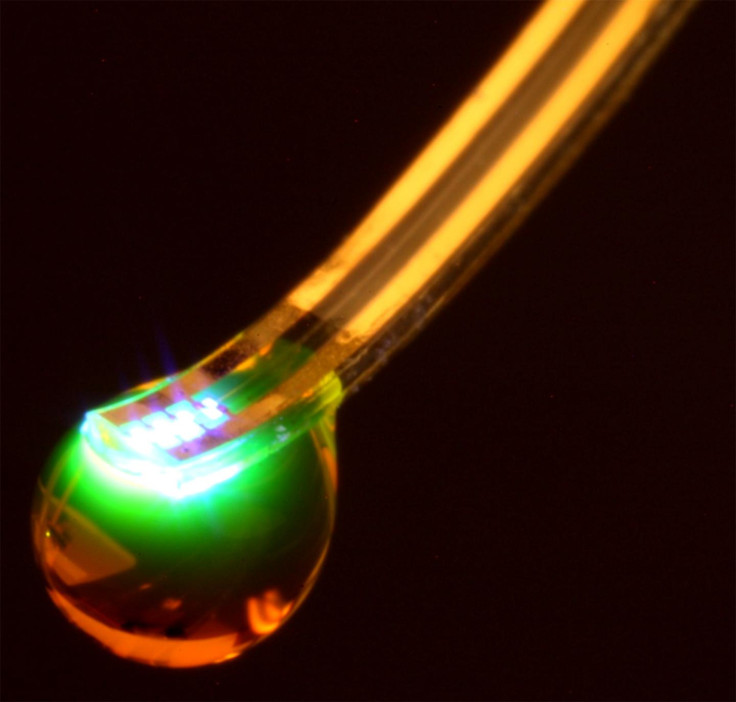Brain probe of the future allows scientists to wirelessly deliver drugs and control neurons

A futuristic brain probe that can wirelessly deliver drugs and shine light on the neurons deep inside the brains of mice has been created by scientists.
A team from the Washington University School of Medicine, St. Louis, and University of Illinois, Urbana-Champaign, created the optofluidic implant with a thickness of 80 micrometers and a width of 500 micrometers – far smaller than the metal tubes normally used to inject drugs – meaning it caused far less damage and displacement to the brain tissue.
Currently, scientists either have to inject drugs through bulky metal tubes or deliver lights via fiber optic cables. Publishing their findings in the journal Cell, the authors created the remote controlled implant from soft materials that can simultaneously deliver drugs and lights.
Michael R. Bruchas, senior author of the study, said: "It unplugs a world of possibilities for scientists to learn how brain circuits work in a more natural setting."

John A. Rogers, also senior author, added: "We used powerful nano-manufacturing strategies to fabricate an implant that lets us penetrate deep inside the brain with minimal damage. Ultra-miniaturized devices like this have tremendous potential for science and medicine."
They tested the implant's drug delivery potential in a series of experiments by placing it in the brains of mice. In some, they found they could precisely map brain circuits by using the implant to inject viruses with genetic dyes.
In other tests, they could make mice walk in circles by injecting a morphine-like drug into the ventral tegmental area (the VTA - which controls motivation and addiction).
James Gnadt, programme director at the NIH's National Institute of Neurological Disorders and Stroke, called the implant a "revolutionary tool" that could be used to map out brain circuit activity.
The scientists have provided detailed instructions for how to manufacture the implant in the hope it will further study in neuroscience. Bruchas said: "A tool is only good if it's used. We believe an open, crowdsourcing approach to neuroscience is a great way to understand normal and healthy brain circuitry."
© Copyright IBTimes 2025. All rights reserved.






















